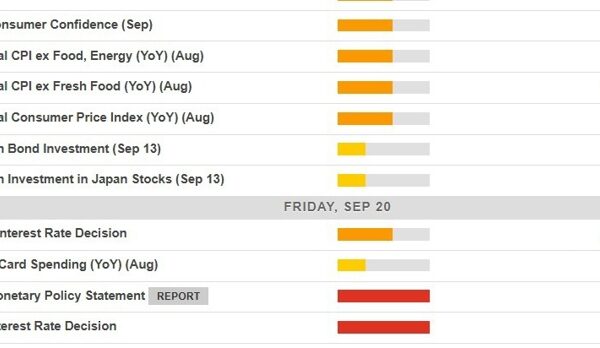As investors peer into the future to envision which industries are ripe to be reshaped and energized by artificial intelligence, drug discovery is fast emerging as an obvious choice. Each new drug that hits the market is the product of billions of dollars in investment, often taking at least a decade to get there. The pathway to commercialization tends to be littered with costly trial-and-error as drug candidates are screened and selected. Only then can a compound be put through the rigorous years-long process of clinicial trials, where vast quantities of data are produced, processed and submitted for review — all without the guarantee of success. Now, many in the field expect AI can help speed up this timeline by making pieces of the puzzle more efficient — and effective. Analysts who have been following companies on the cutting edge of using generative AI for drug discovery say it is still very early days. But excitement and investor interest is building as more AI-assisted drugs are moving through company pipelines. Some tech investors looking to find companies that will benefit from AI advancements are taking a closer at look at health care. KeyBanc Capital Markets analyst Scott Schoenhaus said Recursion Pharmceuticals will have clinical readouts in the second half of this year, while AbCellera and Schrodinger have data expected in the first half of next year. Together these events will help determine valuations for stocks in the group, according to Schoenhaus. To date, the AI trade has favored more direct beneficiaries such as Nvidia , maker of the processors on which the systems run. But for those investors with an appetite for risk, and a belief that AI will lead to more successful and cost-effective drug research and development, here is a look at several leading companies in the space. Each have their own technologies, and business models vary. Recursion Pharmaceuticals Recursion CEO Chris Gibson made a splash at its analyst meeting on June 24 by appearing on stage with Nvidia CEO Jensen Huang. The semiconductor company not only helps fuel Recursion’s computing power, it is an investor , most recently holding 3.4%, according to FactSet. Cathie Wood’s ARK Investment Management is the largest instutional investor with a 10.7% stake. But these endorsements haven’t lifted Recursion shares out of a slump. The stock is down 26% year to date. Recursion told analysts that it expects to share seven clinical readouts over the next 18 months, including looks at four phase 2 datasets. The news briefly cheered investors, but the stock tumbled two days later when the company announced a secondary sale of stock to raise cash. RXRX 1Y mountain Recursion shares over the past year. In a research note, Leerink Partners analyst Mani Foroohar said past clinical development delays have raised doubts about the company, making it a “show me” story. “We struggle to find meaningful near-term catalysts that could serve to refute these concerns and validate Recursion’s advantage in speed and probablity of success in drug development,” Foroohar wrote. In other words, the stakes are high for the clinical data Recursion will be reporting because it will help make the case that its tools will save companies time and money. Recursion’s first chance to prove itself comes in September, with expected data from a phase 2 trial for REC-994, a treatment for cerebral cavernous malformation (CCM), a condition that can lead to bleeding in the brain or spinal cord. KeyBanc’s Schoenhaus said there are about 360,000 symptomatic patients with CCM in the U.S. and European Union, and the treatment has received an orphan drug designation in both. Needham analyst Gil Blum said that the study’s primary goal is to assess safety, but it’s also a chance to gauge its clinical benefit. Together with the other readouts that will follow over the next 18 months, Recursion may begin to validate its platform. Once its technology is proven, bigger benefits may emerge from its partners, which now include Bayer . The drug company will be a beta user of Recursion’s LOWE (Large Language Model-Orchestrated Workflow Engine) and the pair are also partnering on oncology research. Blum also noted that Recursion has the fastest supercomputer in biopharma, Biohive-2. The data it collects is creating a flywheel that can lead to other models being created. “If you believe that this is an important space, and you believe that AI is going to matter in biology in the next five years, I don’t think you have another bet that makes sense,” Blum said, in an interview. “Not in the public domain; in the private, maybe.” AbCellera AbCellera’s strength is the massive quantity of data that it has on immune cells and antibodies, which it can scan to identify drug candidates. The database was proven to aid partner Eli Lilly find a monoclonal antibody , bamlanivimab, to treat Covid-19. AbCellera has prioritized collaborative relationships and its partners include Prelude Therapeutics and Incyte , which are focused on oncology, and Biogen , which is working on discovering antibodies that can deliver treatments across the blood brain barrier. ABCL 1Y mountain AbCellera shares over the past year. AbCellera’s internal research is in very early stages. One program in metabolic and endocrine disease could lead to a first-in-class treatment, according to KeyBanc’s Schoenhaus. He expects an investigational new drug application to be submitted by early next year. Submissions for an atopic dermatitis treatment, which would have a market opportunity of $17 billion by 2032, and for inflammatory bowel disease are expected next year, Schoenhaus said. While the company’s market value has been more than cut in half this year, analysts across the board rate it the equivalent of a buy. According to FactSet, the average price target is $14.63. That’s far above where AbCellera closed Wednesday, just pennies above a 52-week low of $2.69. “With a validated engine, strong balance sheet, a maturing strategy focused on high-value strategic partnerships and, most important in our view, more willingness to take internal assets to greater value inflection points before partnering, we like the long-term setup on this name — particularly as we gain more visibility on both internal and partnered programs,” Allison Bratzel, an analyst at Piper Sandler wrote in a research note in late May. Relay Therapeutics Relay Therapeutics has focused on how proteins interact with other compounds, applying this strategy to targeted oncology and genetic diseases. The company has said its Dynamo platform has been able to reduce the time it takes to find drug candidates. For example, it said it took 18 months to target RLY-4008 for the treatment of bile duct cancer compared with an industry average timeline of three to five years. “I almost would argue Relay has shown us proof of concept at this point,” Goldman Sachs analyst Salveen Richter said in an interview. “They really have been able to take motion-based drug design and apply it to either improving upon existing targets or to go after targets.” Still, work being done on its top drug candidate, RLY-2608, is being closely watched as it will provide a commercial opportunity for Relay. An update on a phase 1b trial for RLY-2608, which treats a form of breast cancer, is expected in the fourth quarter of this year. Relay has also indicated that RLY-2608 could have benefits outside of this type of breast cancer as well. In May, Barclays analyst Peter Lawson upgraded Relay shares to overweight , saying that he believed the RLY-2608 trial update would show superior efficacy and safety. Lawson put a 70% chance of positive data coming from the trial, expecting it to lift the stock. But for now, shares are down 43% year to date, with some recent insider selling weighing on sentiment. RLAY 1Y mountain Relay Therapeutics stock over the past year. Wall Street, however, is united in its view of Relay, with all analysts who cover it, rating the stock a buy. Schrodinger Schrodinger’s computational platform takes a physics-focused approach to help find better drug targets. The company licenses this software to other biopharma companies. More recently, it has started to work on developing its own pipeline and has collaborations with other companies, including Japan’s Takeda Pharmaceutical . By later this year or early next, Schrodinger should be able to share phase 1 data on SGR-1505, an experimental MALT1 inhibitor to treat non-Hodgkin’s B-cell lymphoma. Data on its other drug candidate, SGR-2921, will follow. A phase 1 dose escalation trial for a third drug, SGR-3515, should begin in the current quarter. Like the other companies in the space, shares have suffered this year, falling 42%. SDGR 1Y mountain Schrodinger shares over the past year. Last Tuesday, Leerink’s Foroohar initiated coverage of the stock with an outperform rating and a $29 price target, implying 44% upside from Wednesday’s close. “Despite near-term volatility in software revenue [quarter to quarter] with transition of large customers from on-premise to hosted licenses (in part an accounting/timing impact), SDGR’s physics-based modeling software remains the most proven in its niche,” Foroohar wrote. He expects Schrodinger will benefit from an improved biotech-funding environment that will likely occur next year. If that materializes, and new customer growth returns to a high-teen pace, Foroohar expects about $9 in upside to his price target. The stock could also exceed his target if the company’s collaborations or in-house research yield positive results, he said. Some naysayers have been worried that Schrodinger would be hurt as the tech-enabled drug discovery industry gets more crowded and big pharmaceutical companies like Amgen pursue their own in-house efforts, but Foroohar called that “unlikely.”
Subscribe to Updates
Get the latest tech, social media, politics, business, sports and many more news directly to your inbox.















